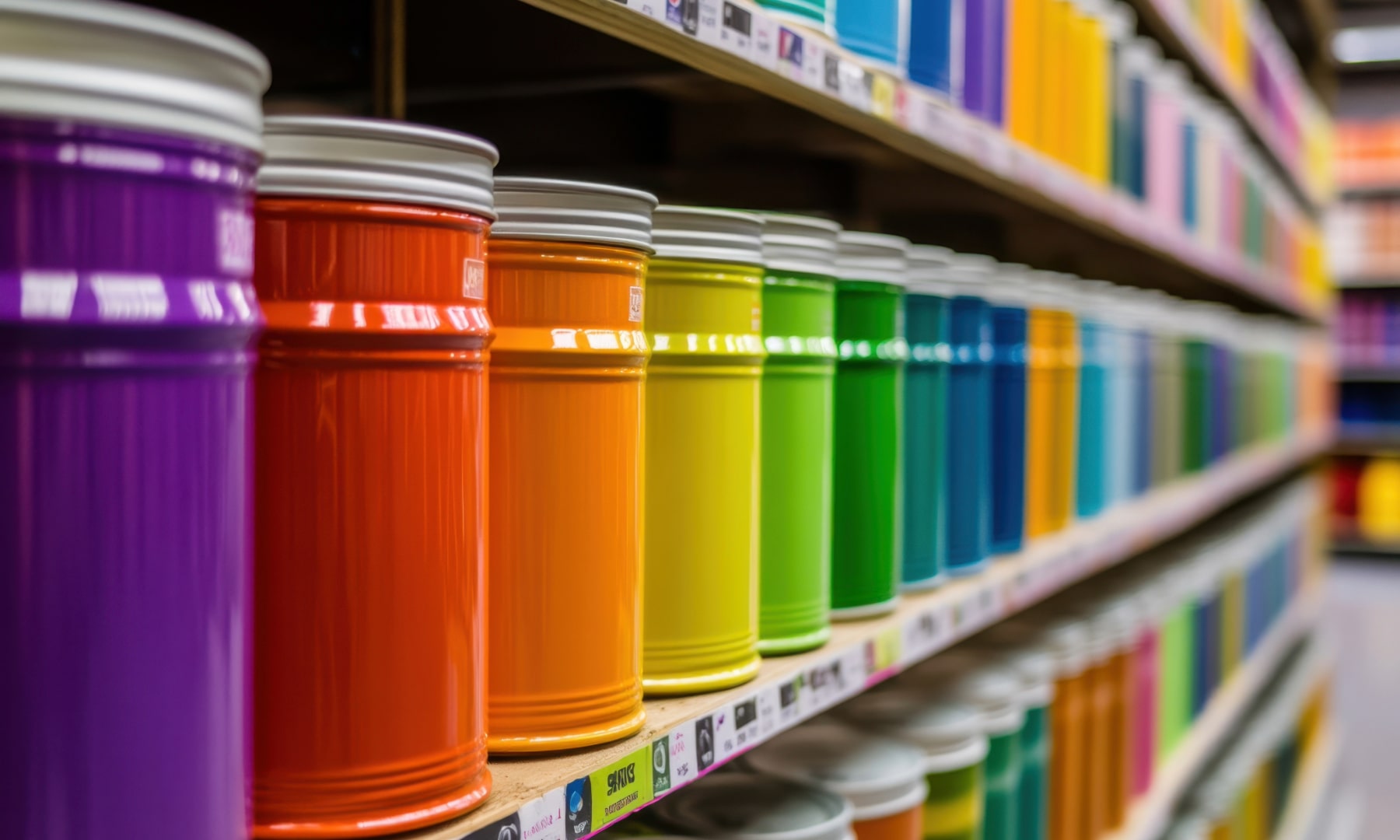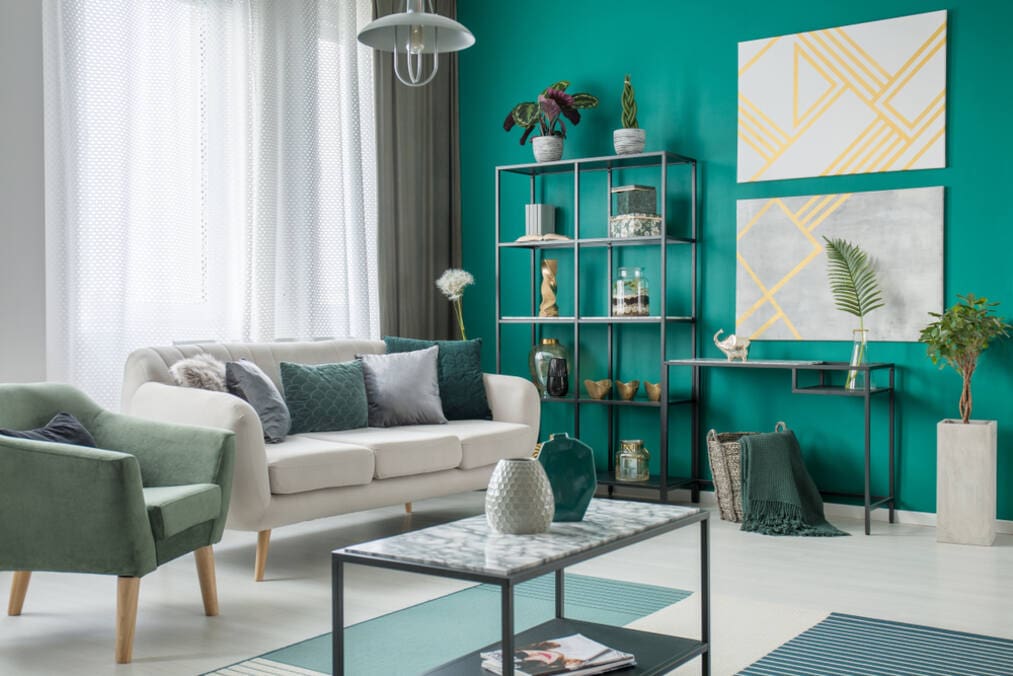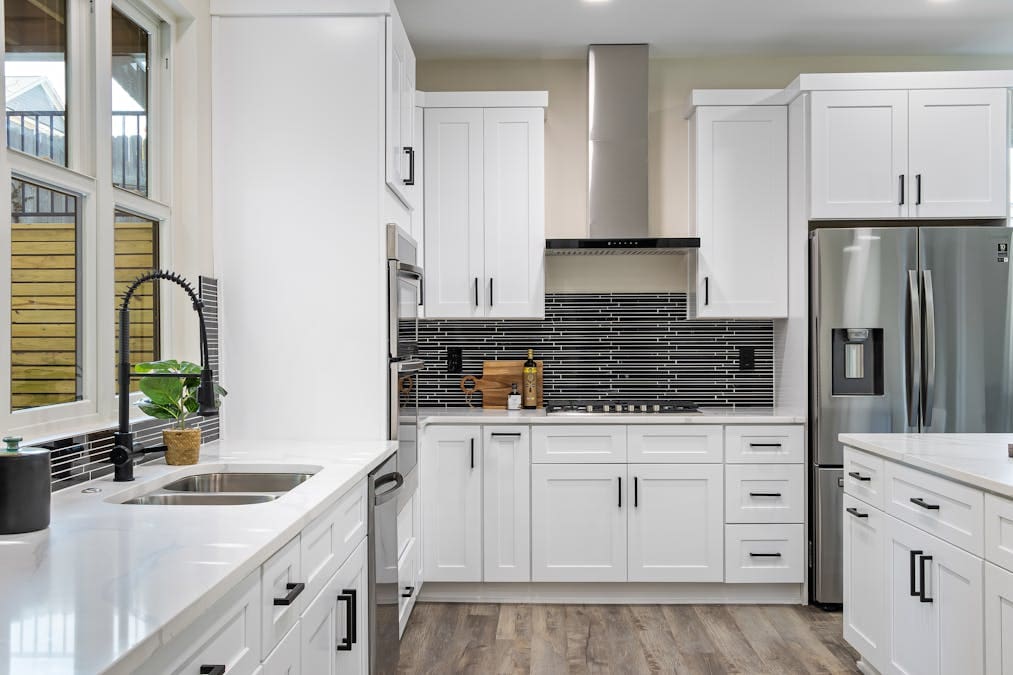
How Lighting Affects Interior Paint Colors & How to Choose Them
How lighting affects interior paint colors is something many homeowners overlook—until their freshly painted walls don’t look the way they expected. A color that seemed perfect in the store or online can appear completely different once it’s inside your home. That’s because lighting plays a major role in how paint colors are perceived, influencing their brightness, depth, and even their undertones.
If you don’t take lighting into account before choosing a color, you might end up with walls that look too dark, too bright, or just… off.
In this blog, we’ll cover:
- How light influences color perception
- How natural light affects paint colors throughout the day
- The impact of artificial lighting on different shades
- Practical tips to help you choose the right paint color for your space
By the end, you’ll know exactly how to test and select colors that look great in any lighting condition. Let’s get started!
How Light Influences Color Perception
Ever wondered why a paint color looks perfect in the store but completely different once it’s on your walls? Lighting is the reason. The same color can shift dramatically based on how much light it gets and what kind of light is hitting it.
Light plays a crucial role in how we perceive color. When light hits a painted surface, it interacts with pigments, either absorbing or reflecting wavelengths of light. This process determines how the color looks to the human eye.
- Warm lighting enhances reds, oranges, and yellows, making colors appear richer.
- Cool lighting brings out blues and greens while muting warm hues.
- Dim lighting makes colors appear darker and more subdued.
There are two main types of light that influence how paint colors appear:
- Natural Light – Changes throughout the day based on the sun’s position.
- Artificial Light – Varies depending on the type of bulbs you use.
Without considering lighting, you could end up with unexpected undertones or a shade that looks too dark or too bright. Understanding these factors before you paint can save you time, money, and frustration. Let’s break it down.
How Natural Light Affects Paint Colors
Natural light is constantly changing throughout the day, which means your paint color won’t look the same at 8 AM as it does at 4 PM. Depending on which direction a room faces, the light will bring out different tones in your paint.
Morning Light (East-Facing Rooms)
- Gets soft, cool-toned light in the morning and minimal natural light in the afternoon.
- Colors may appear brighter and slightly cooler in the morning but duller later in the day.
- Best paint choices: Warm tones (beiges, soft yellows, warm grays) help balance the cooler morning light.
Afternoon Light (West-Facing Rooms)
- Light is muted and softer in the morning, but by afternoon, the sun floods in with warm, golden tones.
- Paint colors may intensify—yellows and reds can become overwhelming.
- Best paint choices: Muted and neutral colors (soft whites, light blues, taupes) help offset the strong afternoon glow.
All-Day Light (North- and South-Facing Rooms)
- North-facing rooms: Receive cool, indirect light all day. Colors can appear darker and more muted.
- Best paint choices: Warmer shades (creamy whites, soft beiges, warm pastels) prevent the space from feeling too cold.
- South-facing rooms: Get consistent, warm light throughout the day. Colors stay true but may appear brighter and more vibrant.
- Best paint choices: Soft neutrals and slightly cooler tones help balance the warm light.
💡 Pro Tip: Always test your paint swatches on multiple walls and check them throughout the day. A color that looks perfect in the morning might feel completely different under the afternoon sun.
Next, let’s look at how artificial lighting changes paint colors even further.
How Artificial Light Affects Paint Colors
Natural light isn’t the only factor that impacts how paint colors appear—artificial lighting plays a major role too. Different types of light bulbs emit different tones, which can either enhance or distort the color on your walls.
Warm vs. Cool Bulbs
Not all bulbs are created equal. Some produce warm, yellow-toned light, while others cast a cool, bluish glow. Understanding these differences will help you make smarter paint choices.
- Incandescent and warm LED bulbs – Emit a yellow-orange glow that enhances warm colors like reds, yellows, and beiges. However, they can make cool colors like blue or gray appear slightly dull.
- Cool LED or fluorescent bulbs – Produce a bluish-white light that sharpens cool tones like blues, greens, and grays but can make warm colors feel washed out or unnatural.
- Neutral white bulbs – Offer a balanced light that doesn’t dramatically shift colors one way or the other, making them a great choice for true color accuracy.
Matching Paint Colors to Lighting
Since artificial light will always be a factor in how a room looks, it’s important to choose paint colors that work well under your specific lighting conditions.
- Test swatches under your room’s actual lighting before committing to a color. A shade that looks perfect under store lighting may look completely different under your home’s light.
- Use large samples on different walls to see how the color responds to artificial light from various angles.
- Consider light reflectance value (LRV). Colors with a high LRV reflect more light, making a space feel brighter, while colors with a low LRV absorb light, creating a cozier, more subdued feel.
Lighting can enhance or distort color in ways you might not expect, so understanding how your bulbs interact with your paint is just as important as considering natural light. Up next, we’ll go over some practical tips for choosing the right color for your space.
5 Tips for Choosing the Right Paint Color
Now that you understand how both natural and artificial light affect paint colors, the next step is choosing a color that will look great in your space—morning, noon, and night. Here are some practical tips to make sure you get it right the first time.
1. Test Before Committing
Never rely solely on a paint chip or an online image. The best way to see how a color truly looks in your home is to test it on your walls.
- Paint large swatches on different walls to observe how the color shifts in varying light.
- Check it at different times of the day to see how it reacts to natural light changes.
- Look at it under your home’s artificial lighting in the evening to ensure it still works.
2. Consider the Room’s Lighting
Lighting in every room is different, so take that into account before choosing a shade.
- If your room gets lots of natural light, a darker color might look lighter than expected.
- If the space relies mostly on artificial lighting, be mindful of how warm or cool the bulbs are and how they’ll impact the color.
- North-facing rooms tend to make colors look cooler, while south-facing rooms intensify brightness and warmth.
3. Think About Surrounding Elements
A paint color doesn’t exist in isolation. It will interact with everything else in the room, from flooring to furniture to decor.
- A neutral gray might look blue if paired with warm wood tones.
- A soft white may feel overly yellow if next to cool-colored furnishings.
- Test your color against existing elements to ensure it complements the space.
4. Stick to Balanced Undertones
Some colors are highly sensitive to light shifts and can take on unexpected hues.
- If you want a versatile neutral, look for shades with balanced undertones—not too warm, not too cool.
- Greige (a mix of gray and beige) is a safe choice that adapts well to different lighting conditions.
- For bold colors, make sure they still look good in both bright daylight and dim artificial lighting.
By following these steps, you can avoid surprises and choose a paint color that works in every lighting condition. Now, let’s wrap things up with a quick recap.
Recap & Final Thoughts
Lighting plays a crucial role in how paint colors appear in your home. The same shade can look completely different depending on the time of day, the direction of natural light, and the type of artificial lighting you use.
Here’s what to remember before choosing a paint color:
- Natural light changes throughout the day—morning light can be cool and soft, afternoon light can be warm and golden, and north- or south-facing rooms will affect how colors appear long-term.
- Artificial lighting impacts color tones—warm bulbs enhance reds and yellows, while cool bulbs sharpen blues and grays.
- Testing is key—paint large swatches on your walls, observe them at different times of day, and check them under your home’s lighting before committing to a color.
- Consider surrounding elements—furniture, flooring, and decor all influence how a color looks in your space.
Choosing the right paint color isn’t just about picking a shade you love—it’s about understanding how light will interact with it. With the right approach, you can ensure your walls look exactly the way you envisioned.
Since lighting plays such a big role in how colors appear, choosing the right paint for your home can feel overwhelming. But you don’t have to figure it out alone. Prep Smart Painting offers expert interior painting services to help you achieve the perfect look for your space. Whether you need guidance on color selection or a flawless, professional finish, we’re here to help.
Contact us today to schedule a consultation and bring your vision to life!






